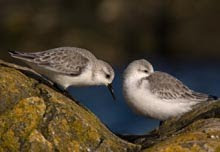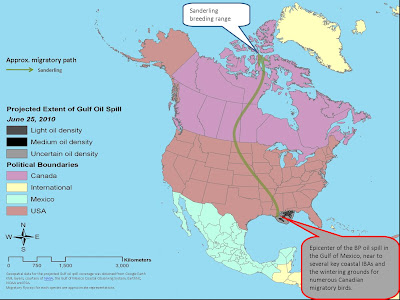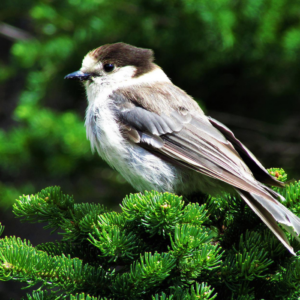Canada’s Birds Feel the Impact of BP Oil Spill – Profile #4
.jpg) Sanderling
Sanderling
The Sanderling is one of the most widespread shorebirds in the world. This small, plump sandpiper can often be seen running along the coast in flocks. Sanderlings feed by probing the sand along the tideline with their bills, chasing after receding waves to pick up stranded crustaceans and molluscs.
An Arctic breeder, this species is common all along North American coasts during migration. Their spring migration, from late April through May, fell right at the start of the oil spill in the Gulf. Waves that formerly deposited food on the beach to fuel the rest of their journey instead deposited sticky slicks of oil that stained the birds a rusty orange.
For those individuals that did make it to their breeding habitat in the Arctic, the fall migration back south takes place through July and August for adults and lasts through August and September for juveniles. As the spill continues to spread away from its epicentre in the Gulf, more of the American coast that these birds will use as stop-overs on their journey to wintering habitats in Central and South America is becoming toxic.
 Read more of Nature Canada’s commentary on the Gulf oil spill.
Read more of Nature Canada’s commentary on the Gulf oil spill.



